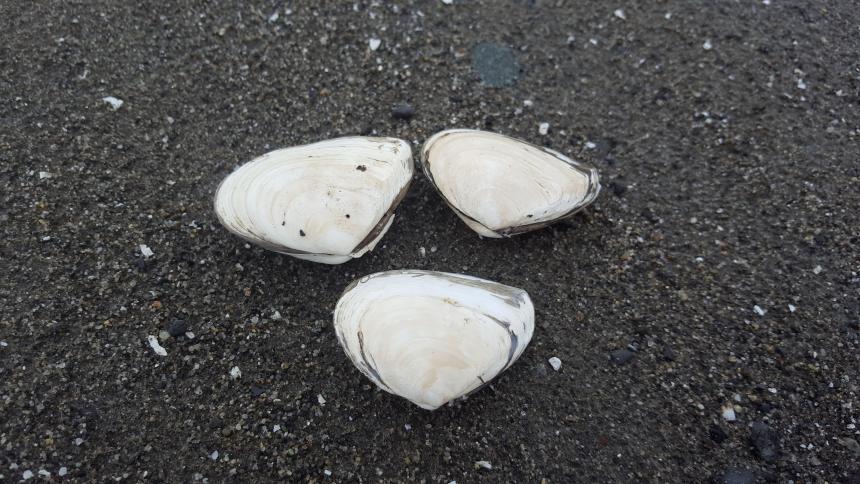Clams can be dug by hand or hand-operated fork, pick, rake, or shovel. Each digger must use a separate container to retain catch. Digging equipment may be shared. Clam holes must be refilled. To reduce clam mortality, please push any undersized clams into the refilled hole. Caution: Always check the local biotoxin status before harvesting via the biotoxin hotline (1-800-562-5632) or www.doh.wa.gov/shellfishsafety.
Description and Range
Physical description
Bent-nose macoma clams are round to oval shaped, tapering at the end where the siphon protrudes from the shells. They grow to 3 inches long. The shells are thin and white, and bend to the side on the tapered siphon end.
Bent-nose macoma clams are buried 4 to 6 inches in sand substrate in the intertidal and subtidal zones.
Geographic range
Bent-nose macoma clams can be found from Cook Inlet, AK to southern Baja California Sur.
Regulations
Licenses and permits
Anyone digging for clams in Washington must have a valid license that includes shellfish harvest. See the Sportfishing Rules Pamphlet for more information, or visit a license dealer.
Rules and seasons
No minimum size. Daily combined limit of all clam species (excluding HORSE CLAMS and GEODUCKS) no more than 40 clams, not to exceed 10 pounds in the shell.
Recreational clam seasons are beach-specific and may change annually. Check this year’s seasons here: Public clam, mussel, and oyster beaches. Always check the DOH biotoxin status before harvesting.
